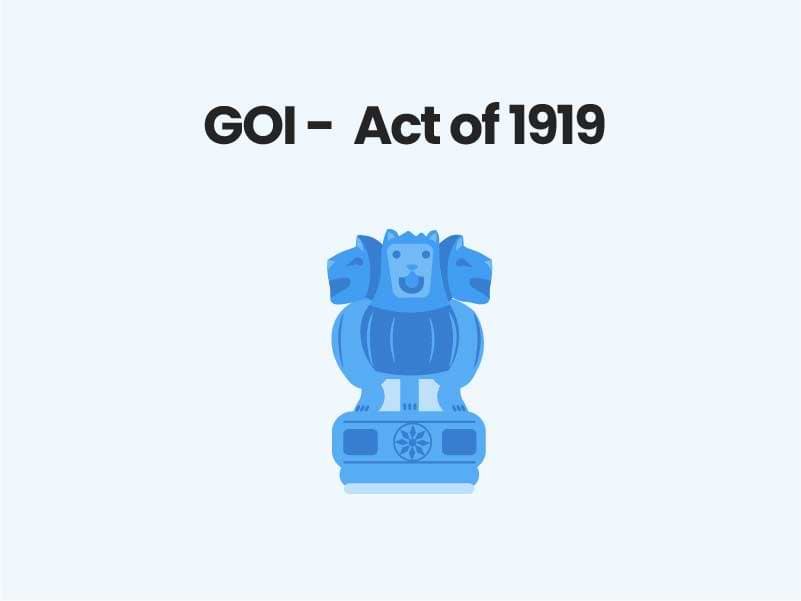
Government of India Act of 1919
The Act provided a dual form of government (a ‘diarchy’) for the major provinces. It relaxed control over provinces by demarcating subjects as ‘central subjects’ and ‘provincial subjects’. Provincial subjects were further divided as – Administered by the governor with the help of his ‘Executive Council’. The ‘reserved list’ included Defence (the military), Foreign Affairs, and Communications.
- Administered by Governor with the aid of ‘Ministers’ responsible for ‘Provincial Legislative Council’. The ‘transferred list’ included Agriculture, supervision of local government, Health and Education.
- This dual system of government was known as ‘Diarchy’. This new system, however, failed to gain popular acceptance and Simon Commission recommended that Diarchy should be done away with and 1935 Act did the same.
- For the first time introduced ‘Direct Elections’ and limited franchise was granted on the basis of tax paid, education, property etc. in the country. The electorates were considerably enlarged to 5.5 million for the provinces and 1.5 million for the imperial legislature.
- A bicameral system at centre (the Central Legislature would comprise two chambers – the Council of State and the Indian Legislative Assembly) was introduced and majority members of both the houses in this bicameral system were directly chosen.
- Establishment of unicameral Provincial Legislative Councils.
- The Central Legislature was empowered to enact laws on any matter for the whole of India.
- Separate Electoral provision of Morley Minto was retained and extended to the Muslims, Sikh
- Seats were reserved for the non-Brahmans in Madras and the ‘depressed classes’ were offered nominated seats in the legislatures at all l
- The revenue resources were divided between the centre and the provinces, with land revenue going to the provinces, and income tax remaining with the centre.
- The Governor-General was given powers to summon, prorogue, dissolve the Chambers, and to promulgate ordinances. Thus, despite reserved and transferred list, governor-general decision was final.
- The number of Indians in Viceroy’s Executive Council was increased to three out of eight members. The number was increased. however, the council still remained at best an advisory body and no real power conferred.
Significance of the reform of 1919
- It established parliamentary democracy in India and beginning of the process of decolonisation”.
- For the first time government showed its intention of gradualintroduction of responsible government in India.
- The structure of this Act also allowed Britain to use the Princely States (who were directly represented in the Council of States) to offset the growing power of the native political parties.
- One important significance of the reforms was that demand by nationalists for self-government or Home Rule couldn’t be termed as seditious since the attainment of self-government for Indians now officially became a government policy which was indicated in August Declaration of Montague.


